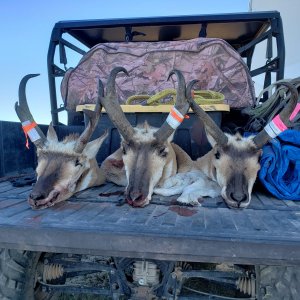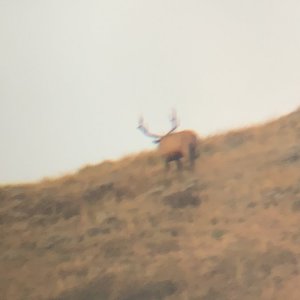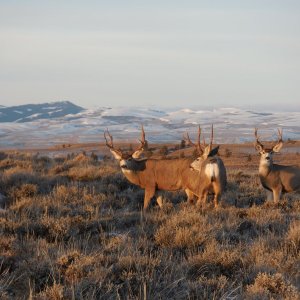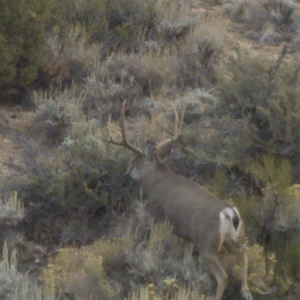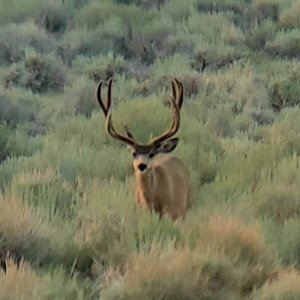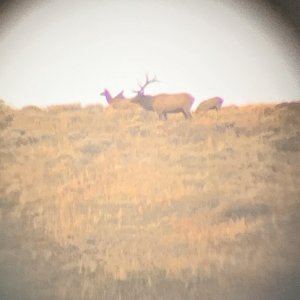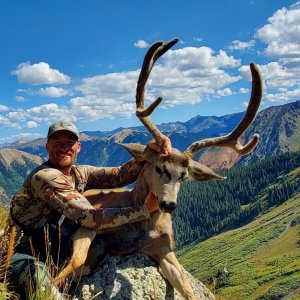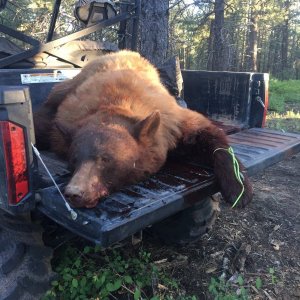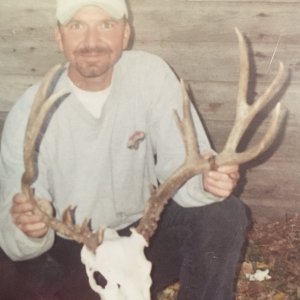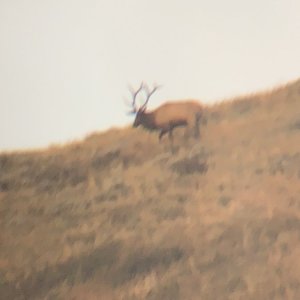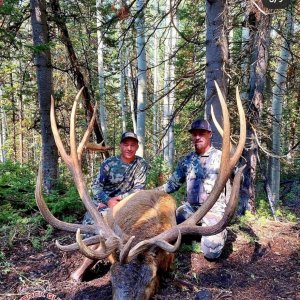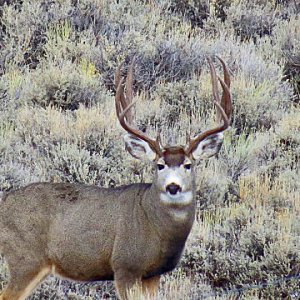H
huntsonora
Guest
1/9/2008
Division of Wildlife
Division of Wildlife to Conduct Emergency Big Game Feeding Operation in Gunnison Area
The Colorado Division of Wildlife is planning to start emergency feeding operations for big game animals in the Gunnison Basin as soon as possible.
Deer will be targeted primarily because they are most affected by adverse weather conditions. Feed and hay will also be provided to bighorn sheep, pronghorn and elk.
Providing feed to wildlife requires a major effort and the DOW is seeking volunteers to help. DOW wildlife managers are now working on the logistics of the operation. While some feeding will start as soon as material is available, the effort will increase as feed - specially formulated for deer - becomes available from a mill next week.
Wildlife officials are concerned that deep snow and extremely cold temperatures in the Gunnison basin are causing deer to deplete their energy reserves too early this winter. Without supplemental food, mortality could reach unacceptable levels. The snowpack in the Gunnison Basin is now at 143 percent of average. It is difficult for deer to push through deep, crusted snow to get to natural food sources. Big game animals lose 30 percent of their body weight during a normal winter. When they lose more than that their survival can be severely compromised.
In the Gunnison area, there are about 260 bighorn sheep in several herds where feed could effectively be delivered. Bighorns winter in steep terrain that doesn't usually hold snow, so they are not as affected by the snow depth.
About 600 pronghorn also live in the area and efforts will be made to feed them. Unfortunately, the DOW has had limited success in getting pronghorn to take supplemental feed. The DOW will attempt to feed them with smaller wafers that have worked previously.
"So far, deer appear to be in pretty good condition for this time of year given the current weather and snow depth," explained J Wenum, area wildlife manager in Gunnison.
"We haven't seen any weather-related mortality to speak of yet. But from experience we know that the snow conditions could soon start to take a toll on deer."
Officials from the Bureau of Land Management, the U.S. Forest Service and Gunnison County are helping the DOW develop strategies for the emergency feeding plan. The DOW would also like to work with private landowners to establish feeding sites.
Deer have more specific nutritional needs than elk and cannot survive on hay. The feed formulation that will be used was developed after extensive nutritional research by DOW years ago. Ingredients include wheat and other grains, dehydrated alfalfa and cottonseed meal. The feed is formulated into wafers so that it will stay on top of the snow. Deer will receive about 3 pounds of the feed per day.
"We will not be trying to feed every deer in the Gunnison Basin. We will be looking for areas where the animals are most concentrated and where we can derive the most benefit," Wenum said.
Wildlife managers will work to keep deer and elk separated. The DOW plans to provide hay to elk - but not because they need it to survive. Elk are aggressive and will quickly displace deer if easy food is available. Placing hay in specific areas will help keep them away from deer feeding areas. Hay may also be placed to move elk away from ranchers' hay stacks or highways.
Because deer derive very little nutritional value from hay, homeowners and landowners are urged not to feed hay to deer that gather on their property.
The feeding operation will probably continue through February or until conditions moderate. By early March officials hope the weather will be getting warmer and that natural forage areas will open up. Big game animals prefer natural forage and will move to those areas as soon as they become available.
Previous winter feeding operations were conducted in the Gunnison area in 1984 and 1997.
Volunteers will be needed for a variety of jobs. To haul feed the DOW needs trailers and a substantial number of vehicles that can handle snowy conditions, especially snowmobiles, snowcats and four-wheel drive vehicles. Volunteers also are needed who can travel through deep snow on cross-country skis and snowshoes.
Volunteers who want to help in the Gunnison area should contact Jennifer Kleffner, southwest region volunteer coordinator at (970)375-6704.
Wildlife managers are also monitoring weather and snow conditions in other areas of western Colorado, including the Eagle Valley, the Aspen area, the Meeker/Craig area and the lower Yampa Valley.
Throughout western Colorado travelers are urged to watch carefully for wildlife along roads. As snow accumulates animals will move toward open areas. The DOW also requests that people avoid disturbing wildlife at this time of year. Do not attempt to get close to animals; observe them at a distance using binoculars or a spotting scope. If they are forced to move they will expend energy unnecessarily.
# # #
The Colorado Division of Wildlife is the state agency responsible for managing wildlife and its habitat, as well as providing wildlife related recreation. The Division is funded through hunting and fishing license fees, federal grants and Colorado Lottery proceeds through Great Outdoors Colorado.
Division of Wildlife
Division of Wildlife
Division of Wildlife to Conduct Emergency Big Game Feeding Operation in Gunnison Area
The Colorado Division of Wildlife is planning to start emergency feeding operations for big game animals in the Gunnison Basin as soon as possible.
Deer will be targeted primarily because they are most affected by adverse weather conditions. Feed and hay will also be provided to bighorn sheep, pronghorn and elk.
Providing feed to wildlife requires a major effort and the DOW is seeking volunteers to help. DOW wildlife managers are now working on the logistics of the operation. While some feeding will start as soon as material is available, the effort will increase as feed - specially formulated for deer - becomes available from a mill next week.
Wildlife officials are concerned that deep snow and extremely cold temperatures in the Gunnison basin are causing deer to deplete their energy reserves too early this winter. Without supplemental food, mortality could reach unacceptable levels. The snowpack in the Gunnison Basin is now at 143 percent of average. It is difficult for deer to push through deep, crusted snow to get to natural food sources. Big game animals lose 30 percent of their body weight during a normal winter. When they lose more than that their survival can be severely compromised.
In the Gunnison area, there are about 260 bighorn sheep in several herds where feed could effectively be delivered. Bighorns winter in steep terrain that doesn't usually hold snow, so they are not as affected by the snow depth.
About 600 pronghorn also live in the area and efforts will be made to feed them. Unfortunately, the DOW has had limited success in getting pronghorn to take supplemental feed. The DOW will attempt to feed them with smaller wafers that have worked previously.
"So far, deer appear to be in pretty good condition for this time of year given the current weather and snow depth," explained J Wenum, area wildlife manager in Gunnison.
"We haven't seen any weather-related mortality to speak of yet. But from experience we know that the snow conditions could soon start to take a toll on deer."
Officials from the Bureau of Land Management, the U.S. Forest Service and Gunnison County are helping the DOW develop strategies for the emergency feeding plan. The DOW would also like to work with private landowners to establish feeding sites.
Deer have more specific nutritional needs than elk and cannot survive on hay. The feed formulation that will be used was developed after extensive nutritional research by DOW years ago. Ingredients include wheat and other grains, dehydrated alfalfa and cottonseed meal. The feed is formulated into wafers so that it will stay on top of the snow. Deer will receive about 3 pounds of the feed per day.
"We will not be trying to feed every deer in the Gunnison Basin. We will be looking for areas where the animals are most concentrated and where we can derive the most benefit," Wenum said.
Wildlife managers will work to keep deer and elk separated. The DOW plans to provide hay to elk - but not because they need it to survive. Elk are aggressive and will quickly displace deer if easy food is available. Placing hay in specific areas will help keep them away from deer feeding areas. Hay may also be placed to move elk away from ranchers' hay stacks or highways.
Because deer derive very little nutritional value from hay, homeowners and landowners are urged not to feed hay to deer that gather on their property.
The feeding operation will probably continue through February or until conditions moderate. By early March officials hope the weather will be getting warmer and that natural forage areas will open up. Big game animals prefer natural forage and will move to those areas as soon as they become available.
Previous winter feeding operations were conducted in the Gunnison area in 1984 and 1997.
Volunteers will be needed for a variety of jobs. To haul feed the DOW needs trailers and a substantial number of vehicles that can handle snowy conditions, especially snowmobiles, snowcats and four-wheel drive vehicles. Volunteers also are needed who can travel through deep snow on cross-country skis and snowshoes.
Volunteers who want to help in the Gunnison area should contact Jennifer Kleffner, southwest region volunteer coordinator at (970)375-6704.
Wildlife managers are also monitoring weather and snow conditions in other areas of western Colorado, including the Eagle Valley, the Aspen area, the Meeker/Craig area and the lower Yampa Valley.
Throughout western Colorado travelers are urged to watch carefully for wildlife along roads. As snow accumulates animals will move toward open areas. The DOW also requests that people avoid disturbing wildlife at this time of year. Do not attempt to get close to animals; observe them at a distance using binoculars or a spotting scope. If they are forced to move they will expend energy unnecessarily.
# # #
The Colorado Division of Wildlife is the state agency responsible for managing wildlife and its habitat, as well as providing wildlife related recreation. The Division is funded through hunting and fishing license fees, federal grants and Colorado Lottery proceeds through Great Outdoors Colorado.
Division of Wildlife

